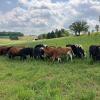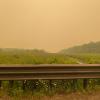We’ve all read about the declining populations of bees and other pollinators. They are clearly facing challenges from habitat loss and pesticide use, even climate change. By managing our gardens, parks, and other greenspaces with pollinators in mind, however, we can transform our towns and cities to support the insects that are essential for a healthy environment—and if we all do something, together we can have a big impact.
Our Bring Back the Pollinators campaign provides one way to achieve this change. Bring Back the Pollinators is based on four principles:
- Grow pollinator-friendly flowers
- Provide nesting and egg-laying sites, and other shelter as needed
- Avoid pesticides
- Share the word
There is no absolute right or wrong way to apply them—they can be adapted to any location—and you don’t have to do everything at once, but the important thing is to start making changes to provide habitat that supports the entire life cycle of bees, butterflies, and other pollinators and is free from insecticides. Add a “pollinator habitat” sign or encourage friends and neighbors to make changes, too, and your efforts can have a bigger impact.
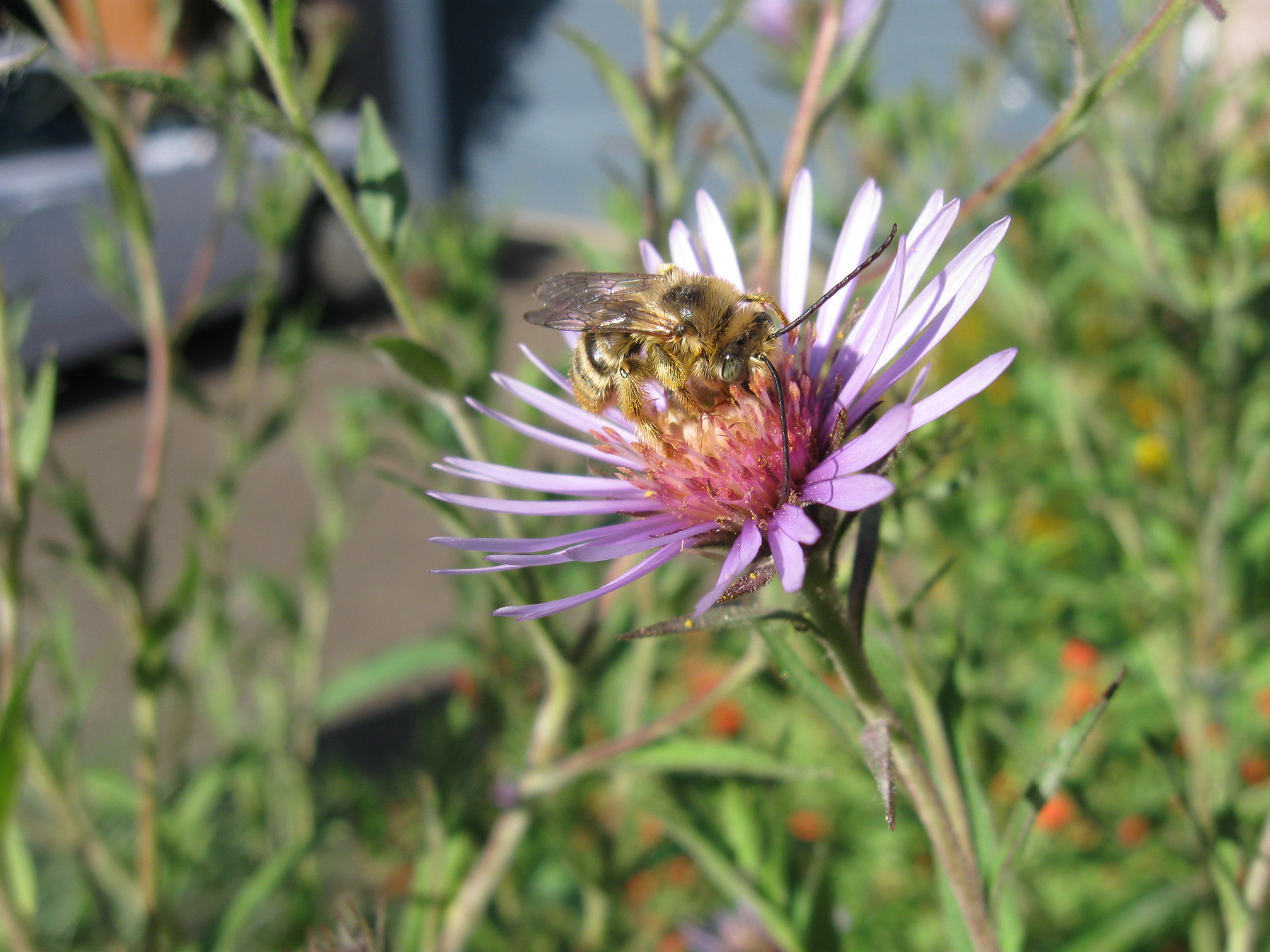
When a garden provides what they need, many different species of bees will visit and live. Long-horned bee (genus Melissodes) foraging on great northern aster (genus Canadanthus). (Photo: Matthew Shepherd)
For example, if you have a garden, look at what plants you are growing and see if there are ways to add more flowers that provide nectar and pollen to feed bees and other insects. Native plants are generally better for native bees and try to have a selection of flowers that together bloom from late winter (e.g., flowering currant) through to early fall (e.g., aster and goldenrod). You could also think about whether you need so much lawn. Can it be reduced to give more space for flowers—or even replaced entirely?
Beyond flower, bees also need places to build their nests and butterflies need the right type of plants for their caterpillars to eat. For example, the majority of bees (e.g., mining bees, sweat bees, and long-horned bees) dig narrow tunnels in the ground off which they make small brood cells for their offspring. Make sure you have bare ground where these bees can dig. Others, such as mason bees and leafcutter bees, make nests in existing tunnels in old trees or hollow twigs. You can make “bee blocks,” but it’s better to retain old trees and have shrubs that offer hollow twigs.
Bumble bees need places in which they can find a small cavity. Piles of logs, rocks, or leaves can provide these, and also offer shelter to overwintering butterflies, ground beetles that will eat pests, fireflies that light up summer nights, even small birds seeking a nest site. Moving away from everything being manicured brings a wealth of benefits!
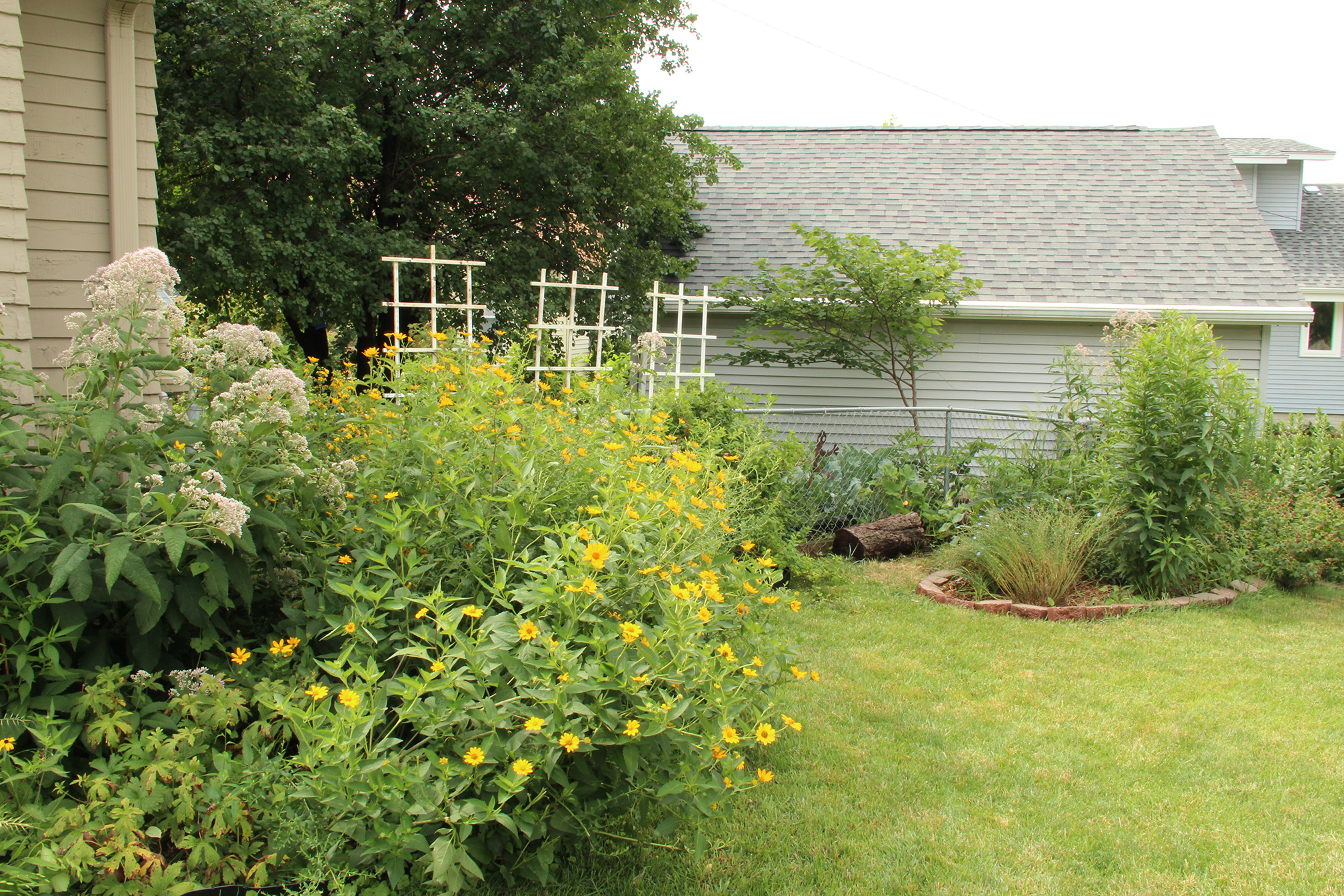
This garden has all the features that make it good for pollinators: lots of flowers, logs and other places where they can nest, and it is kept free of insecticides. The garden also supports fireflies, a summertime joy for the owners. (Photo: Jennifer Hopwood)
That covers two principles. The third is avoid pesticides—especially insecticides, which will directly harm the insects you are trying to encourage into your garden. In all reality, gardens don’t really need pesticides to be beautiful. Does it matter if a leaf has been chewed? After all, if you want butterflies, you need to have caterpillars, which means your plants will be chewed. Another advantage of pollinator gardening is that you’ll be supporting so much other wildlife, including beneficial insects to control the less desirable ones. Syrphid flies are pollinators, but their larvae are predators of aphids—as are lady beetles as both adults and larvae. Fireflies eat snails and slugs. A pesticide-free garden is good for wildlife and you. It’s what might be described as “feel-good, do-good” gardening.
Sharing the word can be anything you want: post photos on social media, have your kids paint rocks to look like bees, install a pollinator habitat sign, write a letter to your newspaper, speak at a community group meeting, talk with your neighbors. It’s whatever you feel comfortable with.
And don’t forget to sign the Pollinator Protection Pledge and make your seemingly small effort part of a nationwide movement.
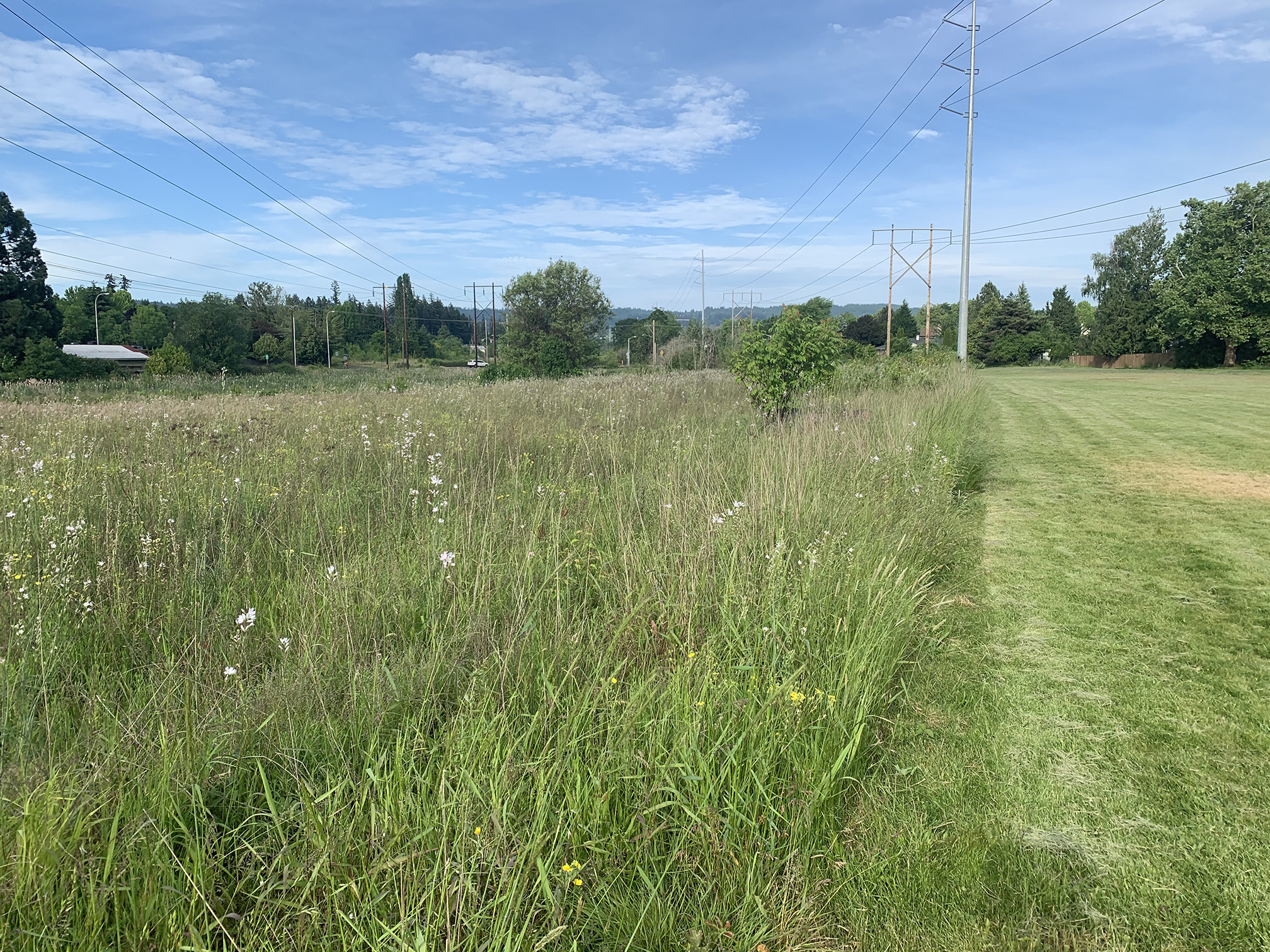
The four principles of the Bring Back the Pollinators campaign can be adapted to any location. The long grass and wildflowers of this pollinator meadow contrast with the mown turf that abuts it, creating defined spaces in a suburban park for recreation and conservation. (Photo: Matthew Shepherd)
These kinds of ideas can be applied to any greenspace. In a community garden, set aside a communal plot for pollinator flowers and nesting. Create meadows in parks or under powerlines. Grow native plants in business landscaping. Don’t mow all the campus lawns. Retain snags and dead trees beside creeks. Plant a hedgerow.
If you’re not a gardener (or are and just want to do more), you can join a community science project and help to gather information about pollinators you see in your neighborhood, or take your conservation passion community-wide and consider getting your hometown to join Bee City USA. (There is also Bee Campus USA for colleges.) In the grocery store, you can choose products that are grown organically or that meet the Bee Better Certified standards.
Our environment is changing, but we don’t have to accept these impoverished conditions as the status quo. There are small, yet meaningful, steps we can take to improve our landscapes so that they can again support wildlife. Bit-by-bit we can change how we garden, rethink how parks serve our communities, and bring wildlife back into our neighborhoods.
Further Reading
Bring Back the Pollinators web page lists the principles and gives access to lots more information.
Make a commitment to pollinators by signing the Pollinator Protection Pledge
Learn about Bee-Safe Nursery Plants
Read more articles about Bring Back the Pollinators on our blog.
Attracting Native Pollinators is our best-selling book. Find a copy at a library or your preferred bookstore.


